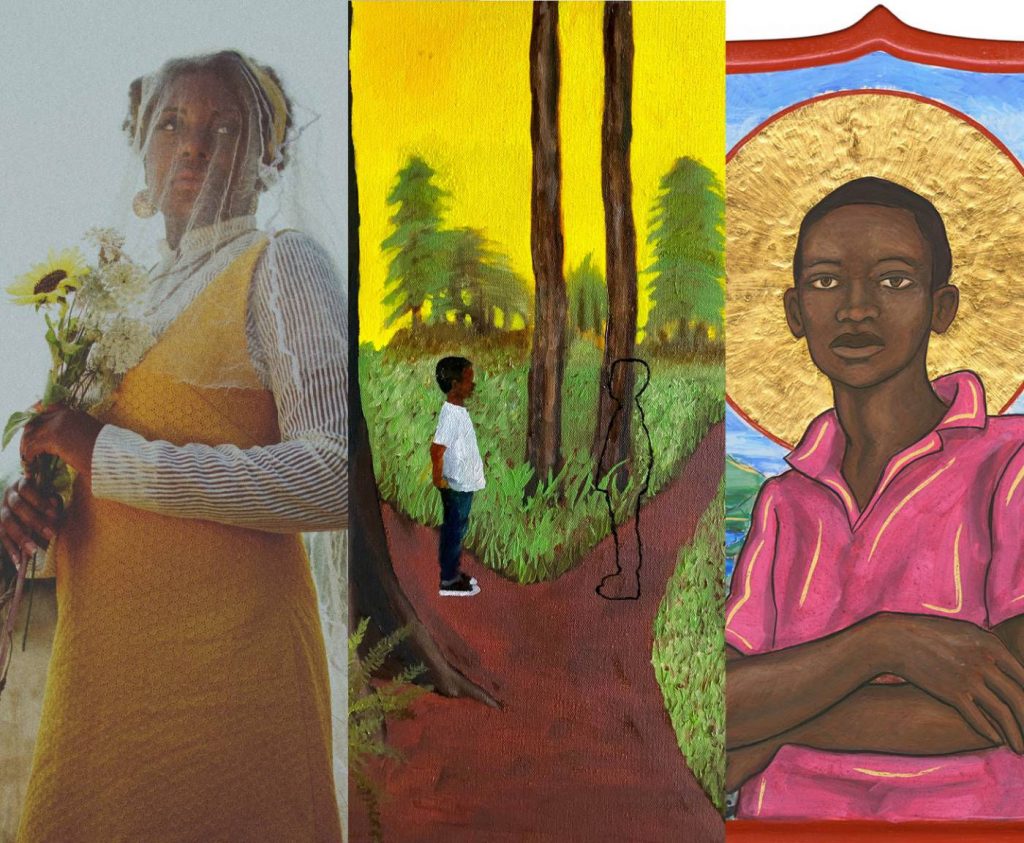by Molly Walsh
The Gallery at Tacoma Community College has a new exhibition that is celebrating the work of Black artists, many with ties to the South Sound region. The Black Art and Black Artists Exhibition showcases works across mediums, exploring themes like historical education, healing and representation. The exhibition runs through March 17 and features the work of 14 artists.
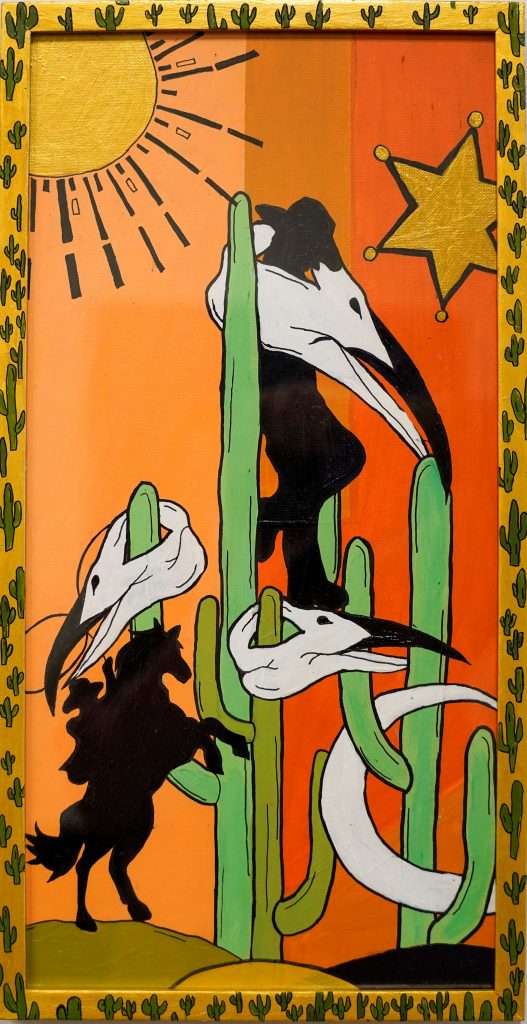
The Gallery at TCC hosts regular exhibitions throughout the year, including shows that feature art that is created by students, faculty and local South Sound residents. The Black Art and Black Artists Exhibit was born out of the college’s commitment to foster a welcoming and inclusive environment for Black students, faculty, staff, and the greater community at TCC and to feature more artwork from artists of color on gallery walls. And providing further connection with the greater community, TCC has partnered with Tacoma Urban League and the Pierce County Black Collective to host this exhibition.
“These artists deserve to have their works showcased, and the art community is energized and enriched when new works and new perspectives are included,” said TCC President Ivan L. Harrell II. “We hope that this exhibit will show art lovers what they may have been missing and strengthen our collective determination not to miss out on art by non-dominant populations in the future. And we hope that, going forward, Black artists will feel that The Gallery is a friendly space where they and their art are always welcome.”
Each of the exhibition’s 14 artists brings their own art style, medium and perspective to the table. Whether that’s exploring regional history, Black and Brown representation in gallery art or the Black experience, visitors to the exhibition will have many works to view and contemplate.
Lauren Napier
Lauren Napier has two paintings on display in the Black Art and Black Artists Exhibit, “Bass Reeves in the Arizona Desert” and “Pan African Bunnies,” both acrylic on canvas. Napier is an artist across many mediums, including as a musician and visual artist. While musical touring was on pause during the height of the COVID-19 pandemic, Napier leaned further into her interest in visual art, particularly painting. As a parallel to her musical style, Napier said she was also drawn to storytelling, incorporating imagery of desert landscapes and skeletal animal figures, while also providing the audience an education about certain historical events, including Black history and history of the American West.
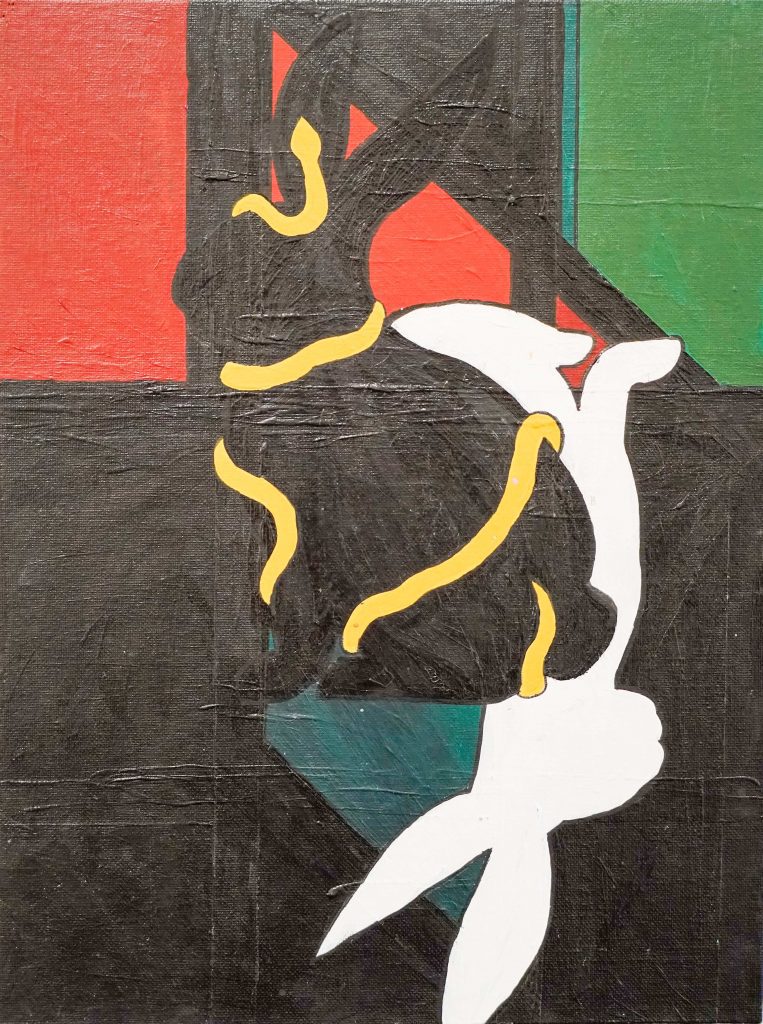
“I found myself telling these desert tales for the most part, and using the narrative of the canvas to also share a story or an educational moment,” said Napier.
“Bass Reeves in the Arizona Desert” features a bright sun in a desert backdrop, and through this painting, Napier explores the use of vivid color, silhouette and storytelling in a visual medium. The painting also serves as a lesson in history, as Napier untangles the origins of popular American West lore.
“Bass Reeves is the actual foundation of the legend of the Lone Ranger, who of course in our American media history is a white cowboy,” said Napier. “He was actually a freed slave turned sheriff.”
“Pan African Bunnies,” catches the eye with the use of red, green and gold, contrasted with black and white bunnies in silhouette. Napier said combined symbolic figures, like the painting’s gold serpent, explore the role of capitalism in a greater societal context.
“You have a gold serpent choking both of them which is, you know, like, the gold fetters or chains of capitalism, is what that symbolizes and . . . the ugliness that it intertwines,” said Napier.
JW Harrington
The arts have accompanied JW Harrington through many eras of his life, including R&B music as a child, choral music in middle and high school, English and American Literature and the study of art appreciation, (particularly in the European-American tradition) through college. For decades, Harrington has also been a visitor of museums, studying the different pieces that he would view on gallery walls. It wasn’t until Harrington was on a sabbatical, though, that he began to take up painting himself.
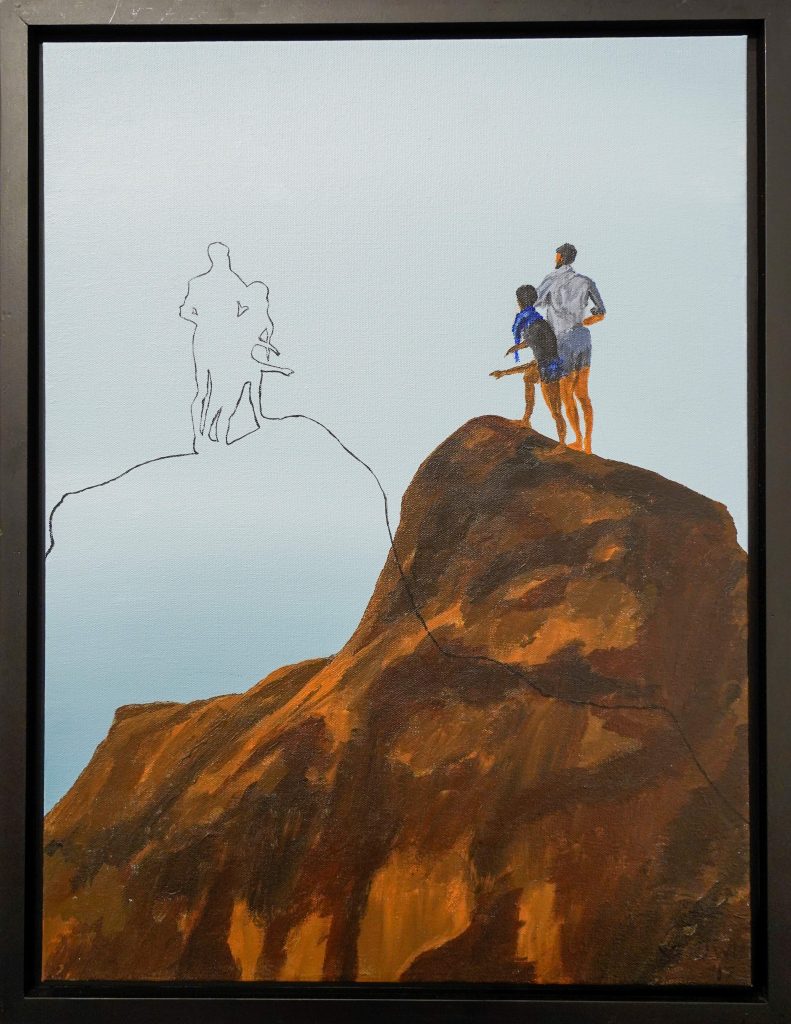
Harrington said he has continued to practice painting through the past eight and a half years for a multitude of reasons. Painting allows him to create in privacy, within an art studio setting, deciding for himself when a piece is ready to be unveiled to the world. Once a painting is complete, there is a tangible product that is accessible to a wider audience, something that was a new experience for Harrington, as he was used to academic writing as a college professor.
“I love having a physical product that anyone can view and appreciate,” said Harrington. “I spent decades writing academic papers that required that the reader have fairly esoteric interest and knowledge, and I find it rewarding to be able to point to an object and say ‘I did that.’”
Through past works, Harrington has explored the use of color and occasionally, the absence of color, including his first series “Color Abstractions” as well as an additional series “MBTW,” in which Harrington only utilized two pigments for the paintings, Mars Black and Titanium White.
Harrington also creates more figurative work that features Black or Brown subjects, something he wants to normalize in gallery artwork. Within the Black Art and Black Artists exhibit, Harrington has two paintings, both are part of his current painting series, “The Impossibility of Knowing.”
“The motif there is a (set of) dominant figure(s) in a muted background,” said Harrington. “The figure is then mirrored in outline. When the figure is abstract, the figure and its mirrored outline interact to imply other shapes. When the figures is/are human, they find themselves confronted with a hollow outline of themselves. Are they confronted by their past, their future, their absence, their inner selves?”
Dionne Bonner
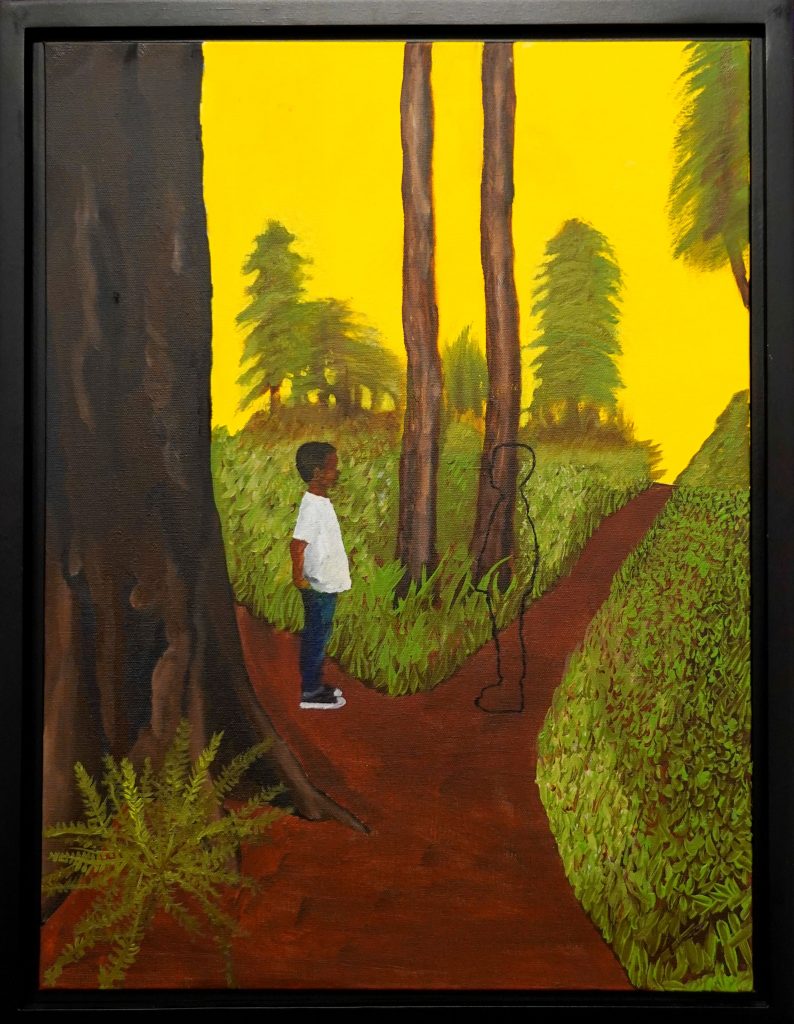
Dionne Bonner was raised in a family of artists, painters and musicians and was encouraged to create art herself when she was in school. After graduating The Art Institute of Seattle, Bonner made art a part of her career as a freelancer and as an art business owner over the years. Recently, Bonner was the mural project lead and a mural artist for the Black Lives Matter Mural Project at Tollefson Plaza in downtown Tacoma. Through her painting, Bonner focuses on storytelling, tackling lived experience and exploration of greater societal issues.
“I like to focus on telling stories about people and place, and specifically about the African American, the Black experience through my own eyes and through what I see in society,” said Bonner. “And also really, ultimately, I like to speak about social issues and how we’re…connected, the social and emotional and economic state of my community through my work.”
Bonner has three oil portraits in this exhibit. The subjects of the portraits include Nettie Asberry, John Conna and William Owen Bush, all African American figures in Washington state history. These portraits are part of a larger series about African American pioneers from the Pacific Northwest that Bonner completed in the 1990s as a commission for a museum.
“This series that I did in 1994 was instrumental in my own life because it showed me the depth of my community’s contributions to the Pacific Northwest,” said Bonner. “That, you know, Black people have been making very substantial and long-lasting and really instrumental and pivotal decisions and contributions to Washington State.”
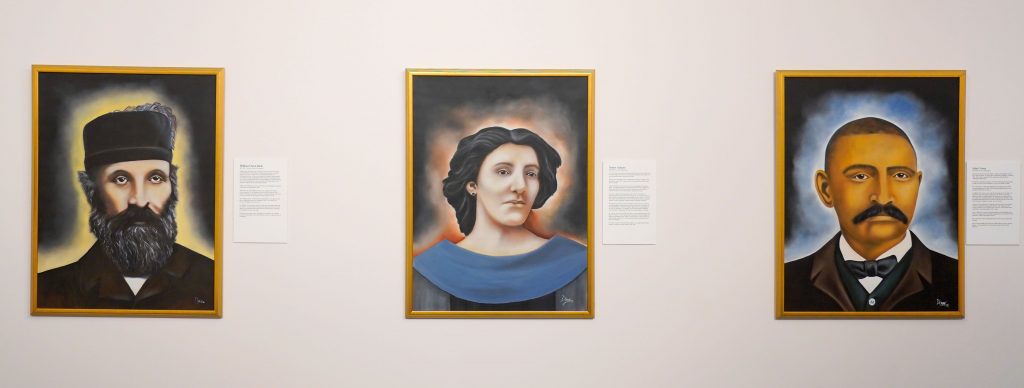
Being part of this exhibition was important for Bonner, to display these portraits, to continue to share this regional history with the community and to build community with fellow local artists.
“I’m always trying to connect with other artists,” said Bonner. “It can be a kind of a lonely thing being an artist when you don’t have a specific group that you already are connected to. And as Black artists, that’s even more secluded at times. And so I’m very happy to be amongst very talented artists and have an opportunity for the exposure of the pieces and again, mainly also for the exposure of history.”
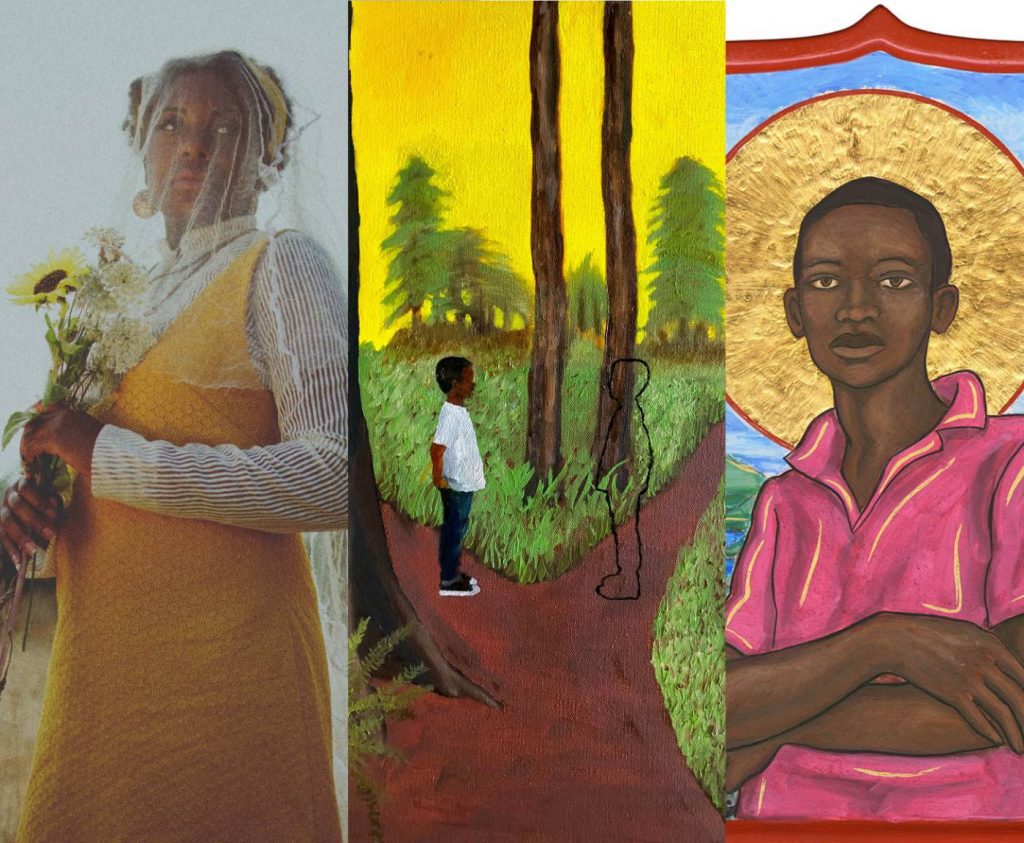
WHAT
Black Art and Black Artists Exhibition
WHEN
Through March 17
WHERE
The Gallery at Tacoma Community College (Building 4)
HOW MUCH
Free
LEARN MORE
https://www.tacomacc.edu/tcc-life/arts-culture/black-art-black-artists

